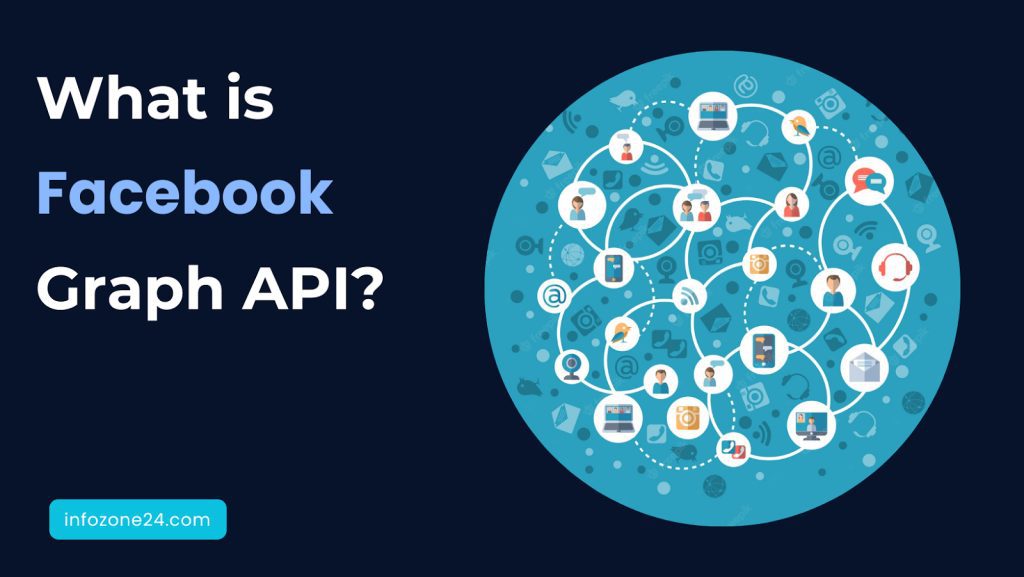Do You Know What is facebook graph API? and how to use the facebook API? Millions of users post, comment, and share something every day on Facebook. Today many companies all over the world use Facebook for promotion and advertising. There are agencies who help them in making a good marketing campaign. Facebook provides multiple opportunities to build a successful business with many specialized tools.
Without a specialized application, it can be impossible to search and filter data. Facebook facilitates the work of programmers and social media monitoring specialists. Facebook has developed the Facebook API tool. It allows you to work with a large amount of information in a specialized way. You can search for complex keywords and keys, and analyze the received data. It also provides predefined filters and sorting options.
This tool is easy to use and it is in demand by businesses who are just getting acquainted with the social network API. This article provides a step-by-step guide to using Facebook API. Also, how you can use Facebook API for your business.
Read Now: Binance Smart Chain API vs. Ethereum API: A Comparison
What is an API?
API stands for Application Programming Interface. An API is a software-to-software interface. An API provides a secure and standardized way for applications to work together. It delivers the requested information without user intervention.
What is Facebook Graph API?
The Facebook API or Facebook Graph API is an HTTP-based API. It allows developers to extract data from Facebook. It is one of the most popular APIs for social media analytics companies and social media listening product developers. Facebook API provides full access to social graphics, news feeds, and user data. Developers can use Facebook API to automatically query data, post in pages and groups, manage ads, etc.
The current version of the Facebook API is v17.0 and it was released on May 23, 2023.
Extensions of the Facebook Graph API:
There are some other Facebook APIs that are extensions of the Graph API. Here’s a brief description of these extensions.
Conversions API:
With the help of Conversions API, applications can track the following:
- Web Conversions
- Post-Conversion Events
- Page Visits
- Data Required For Ads
This information can improve the performance of your Facebook ad campaigns.
Live Video API:
It allows applications to stream live videos directly to Facebook user profiles, pages, and groups. With this API, your application can:
- Broadcast a Live Video Stream
- Schedule Broadcasts
- Interact With Audiences during Broadcasts
- Create Polls on Broadcasts
Instagram API:
Instagram API allows your app users to:
- Publish Media
- Manage Published Media
- Regulate Comments
- Discover @Mentions
- Share Instagram Stories
Marketing API:
With the help of this API, businesses can advertise on Facebook by automating ad management and creation.
Video API:
This API enables applications to publish videos on Facebook Pages and Groups. It also enables apps to cross-post and get insights on those videos.
Pages API:
This API allows applications to create and manage a Page’s content and settings.
WhatsApp Business API:
This API allows businesses to connect agents and bots to customers via WhatsApp.
How to Use the Facebook API? Step-by-step Guide for API Integration
To use the Facebook Graph API, you need to:
- Register as a Facebook Developer
- Create a Meta App
- Have a brief understanding of Graph API Overview Guide
You are required to develop your app according to the information provided in the App Dashboard.
After this, make your first request.
Step 1: Open the Graph API Explorer
Open the Graph API Explorer tool in a separate browser window.
The explorer will with some information. There will be a default query with the GET method. It is circled in the image below.
Step 2. Generate Access Token
There will be a Generate Access Token button on the right side of the screen. Click this button. A “Login with Facebook” window will show on your screen. By clicking the button “Continue as [username]”, you grant permission to your app. This permission is to get your credentials from Facebook.
This is the “Facebook Login” product of Facebook. It will allow users to log into your app using their Facebook credentials.
Click Continue as [username].
A User Access Token will be created. This token contains the information about:
- The app making the request
- The person using the app
- The expiration time (Token expires in about an hour)
- The scope of data that the app can request
You can view the token’s information, by clicking the information icon as shown in the screenshot below.
Step 3. Submit the request
There will be a Submit button in the top right corner. By clicking this button, you can submit your request. You will see a Response window with JSON response. This response includes your Facebook User ID and name.
You can also make more complex subsequent requests by adding fields like:
- User Data Permissions
By doing this, you can change the scope of the access token. If you need to generate a new access token, follow the same steps mentioned above.
Business Uses of the Facebook Graph API:
There’s a lot you can do with the Facebook Graph API. Here are some ways to use it for your business.
Audience insights:
Developers can retrieve information about a user’s friends, interests, and activities. This data can be used to get audience insights. That’s why Amazon and Spotify use the API.
Manage ads:
You can also use the Facebook API to manage ads. By analyzing user connections and interests, developers can surface content that is likely to be of interest to a particular user.
Page insights:
You can use Facebook API to gain valuable insights into user relationships and enhance the user experience. It will help you to create powerful dashboards to better understand your content.
Post live videos:
With the help of Facebook API, you can post live videos to Pages, Groups, and User timelines from your app.
Embed Facebook and Instagram feeds:
You can use the Facebook API to display your Instagram feed on your blog or embed a positive Facebook review from a customer on your e-commerce site.
Access Facebook Groups:
With the Facebook API, you and your app users can access and post content in their Facebook Group. You can also help them get information about the activity happening in their Group.
Access content on Instagram:
You can access Instagram Graph API’s Hashtag Search endpoints with your app. This allows your app to discover photos and videos using your hashtags. You can understand public feelings about your brand.
Customer support:
The Facebook API also allows your app to provide customer support.
Competitive Analysis and Benchmarking:
You can even access and read public data from any Facebook Page. This data can be used for competitive analysis and benchmarking.
The Facebook Social Plugins:
Here’s a list of Facebook Social Plugins for your app.
Like Button: To like content or pages.
Share Button: To share content or pages.
Comments Plugin: To leave comments on content.
Group Plugin: To join a Facebook group.
Page Plugin: To add embed components of Facebook pages to a webpage.
Embedded Posts: To add public posts to a webpage.
Embedded Video & Live Video Player: To add public and live Facebook videos to a webpage.
FAQs: Facebook Graph API
Every API has its limitations. Facebook Graph API queries made within the app access token are calculated by multiplying the number of app users by 200. An application’s call count is the number of requests it can make in one hour.
The Facebook Graph API is a restful HTTP-based API. You can run queries in any browser. It is very easy to integrate the Facebook Graph API. You only need:
1. An HTTP client library
2. A library to parse JSON
The Facebook Graph API is free to use with some exceptions. There may be fees for certain types of data requests.
Conclusion:
The Facebook Graph API offers a powerful set of tools and functionalities for integrating social features into your application. It provides you access to the social media platform that ordinary users can’t get. It provides developers with the means to create engaging and personalized experiences. You can increase the reach of your content by incorporating social plugins.
There are many ways to use Facebook Graph API to boost your business. It allows you to reach a wider audience and grow your business.
By learning the Facebook API integration, you can unlock the full potential of your app and grow your brand at scale. Well, the possibilities are unlimited. With the Facebook Graph API, you can build a truly innovative and engaging brand.
Read Now: How to Take Screenshots on Razer Laptops
Michael C Vang is a passionate blogger. He has been blogging since 2013 on a variety of topics. He is committed to creating informative and engaging content that helps readers learn more about everything.



